Amsterdam
In Amsterdam riots fully broke out on Monday June 24 at the Botermarkt. Pavements were broken up and stones were thrown. People ran through the houses of the taxmen, breaking open and looting everything, and throwing crates of money and expensive porcelain from the bridges into the water. 36 houses in total were looted, and three people were killed and wounded.
The riots lasted until Tuesday evening. On Wednesday morning all pacht taxes were suspended for a period of six months. On Friday, June 28, two men and one woman would be hanged from the window of the Waag on the Dam. The onlooking crowd began to move in to be able to watch better, or possibly to try to free the convicted. Suddenly shooting was heard from the direction of Kalverstraat, and panic broke out. Many people were looking for shelter and jumped into the water from the Damrak. Contemporary local chronicler Braatbard suspected around two hundred men either got trampled or drowned.
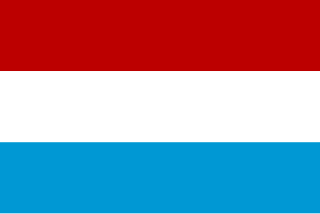
The United Provinces of the Netherlands, officially the Republic of the Seven United Netherlands and commonly referred to in historiography as the Dutch Republic, was a confederation that existed from 1579 until the Batavian Revolution in 1795. It was a predecessor state of the present-day Netherlands and the first independent Dutch nation state. The republic was established after seven Dutch provinces in the Spanish Netherlands revolted against Spanish rule, forming a mutual alliance against Spain in 1579 and declaring their independence in 1581. The seven provinces it comprised were Groningen, Frisia, Overijssel, Guelders, Utrecht, Holland, and Zeeland.
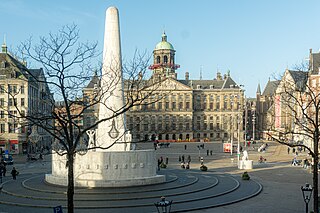
Dam Square or the Dam is a town square in Amsterdam, the capital and most populated city of the Netherlands. Its notable buildings and frequent events make it one of the best-known and most important locations in the city and the country.

Amsterdam has a long and eventful history. The origins of the city lie around 1000 CE, when inhabitants settled at the mouth of the Amstel and began peatland reclamation. After the All Saints' Flood (1170), a dam was built in the Amstel to protect the lower lands from floods.

Groningen is the capital town of the Saramacca District, Suriname.
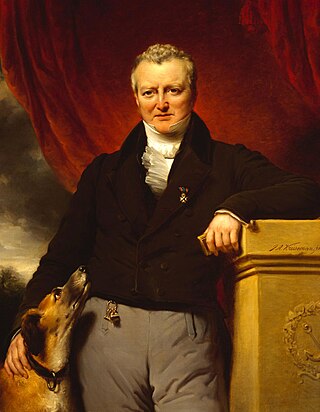
Adriaan van der Hoop was a Dutch banker and in the first half of the 19th century one of the richest men in the Netherlands. He also was an influential politician: a member of the city council, the States-Provincial in Haarlem and the Senate in The Hague. In his later years he became an important art and plant collector. On his death he left 250 paintings to the city of Amsterdam, who could barely pay the inheritance tax. In this way Van der Hoop contributed substantially to the collection of the Rijksmuseum.

The 1740 Batavia massacre was a massacre and pogrom of ethnic Chinese residents of the port city of Batavia, Dutch East Indies, in the Dutch East Indies. It was carried out by European soldiers of the Dutch East India Company and allied members of other Batavian ethnic groups. The violence in the city lasted from 9 October 1740, until 22 October, with minor skirmishes outside the walls continuing late into November that year. Historians have estimated that at least 10,000 ethnic Chinese were massacred; just 600 to 3,000 are believed to have survived.
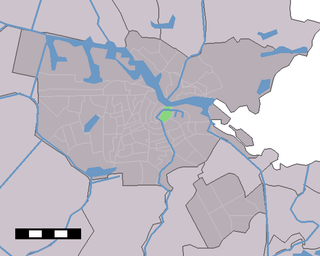
Lastage is a neighborhood in the Centrum borough of Amsterdam, Netherlands. It is located between the Geldersekade and Oudeschans canals, just east of old medieval city. Today, the neighbourhood is also known as Nieuwmarktbuurt due to the fact that the Nieuwmarkt is comprised in the area; it is protected as a heritage site.
Marretje Arents, known as Mat van den Nieuwendijk, and het limoenwijf, was a Dutch fishwife and rebellion leader, sentenced to death as one of the three instigators and leaders responsible for the so-called Pachter riots of 1748.
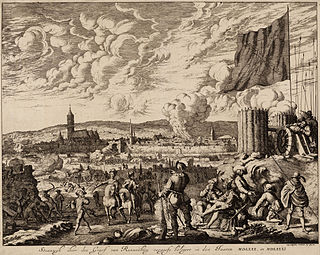
The siege of Steenwijk took place from October 18, 1580 – February 23, 1581 during the Eighty Years' War and the Anglo–Spanish War, between a besieging Spanish force under turncoat George van Lalaing against a Dutch garrison at Steenwijk under Johan van den Kornput. An English and Dutch Republican force under John Norreys successfully relieved the town on January 24, and the Spanish in addition to ill-health and lack of supplies subsequently lifted the siege in February.
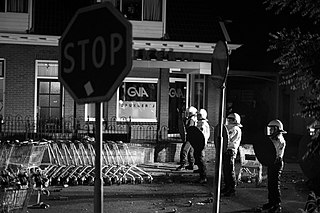
Project X Haren was an event that started out as a public invitation to a birthday party by a girl on Facebook, but ended up as a gathering of thousands of youths causing riots on 21 September 2012 in the town of Haren, Groningen, Netherlands.

The siege of Groningen was a two-month siege which commenced on 19 May 1594, and which took place during the Eighty Years' War and the Anglo-Spanish War. The Spanish-held city of Groningen was besieged by a Dutch and English army led by Prince Maurice of Orange. The Spanish surrendered the city on 22 July, after a failed relief attempt by the Count of Fuentes.
The 1999 Rotterdam riots refers to serious riots and clashes between Dutch security forces and football hooligans in Rotterdam, the Netherlands on 26 April 1999.

Squatting in the Netherlands is the occupation of unused or derelict buildings or land without the permission of the owner. The modern squatters movement began in the 1960s in the Netherlands. By the 1980s, it had become a powerful anarchist social movement which regularly came into conflict with the state, particularly in Amsterdam with the Vondelstraat and coronation riots.

Johannes Alexander "Hans" Vijlbrief is a Dutch civil servant, economist, and politician, currently serving as a member of parliament for the social-liberal party Democrats 66 (D66). He previously served as State Secretary for the Extractive Industries in the Fourth Rutte cabinet.
The institution of the pacht or pacht-stelsel was a system of tax farming in the Dutch Republic and its colonial empire. In this system tax is not collected by the government, but by a private individual who has leased the right to collect the tax. In the Dutch Republic, for example, this was common practise for a long time, especially for indirect taxes. Each year, the highest bidder acquired the right to collect certain taxes; he paid a rent for this to the government, and all he collected more was for the tax tenant himself. The rationale behind this system was that by outsourcing taxation, local governments could exert less influence on collection. Also, a tenant would collect taxes more scrupulously, because it would personally benefit him.

The 2021 Dutch curfew riots were a series of riots in the Netherlands that initiated as protests against the government's COVID-19 prevention measures and specifically the 21:00–4:30 curfew that was introduced on 23 January 2021. The police have described the riots as the worst in the country since the 1980 coronation riots.

Protests against COVID-19 in the Netherlands were a series of protests and riots in the Netherlands against the government COVID-19 prevention measures, which were in force between 27 January 2020 and 20 May 2022, with travel restrictions lifted on 17 September 2022. The protests came to a head with the 2021 Dutch curfew riots in response to a nationwide night-time curfew between 23 January and 28 April 2021. Since the end of the COVID-19 pandemic in the Netherlands, a number of anti-lockdown protest groups and individual protesters have shifted their attention to the ongoing, largely concurrent Dutch farmers' protests against government legislation to limit agricultural pollution by downsizing livestock production.
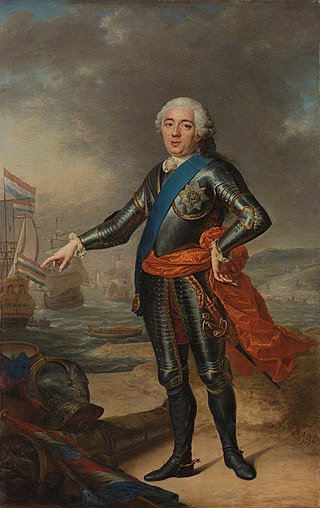
The Orangist revolution of 1747 brought William IV, Prince of Orange to the Stadtholder office, finishing the Second Stadtholderless Period.

Louise Elisabeth (Wies) van Groningen, was a Moluccan Dutch writer and story collector. She was active in the Black, migrant and refugee women's movement and in the Dutch Moluccan and Indonesian community. Her aim was to improve information for and about ZMV women. She wrote many stories about her ancestors, and encouraged Dutch Indonesian and Moluccan women and men to record the life stories of their ancestors.

















